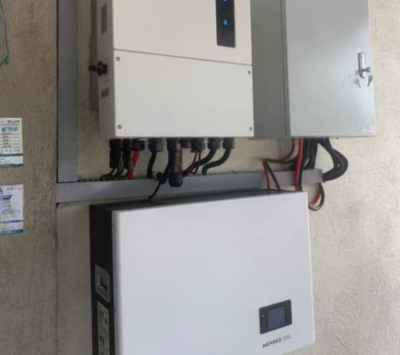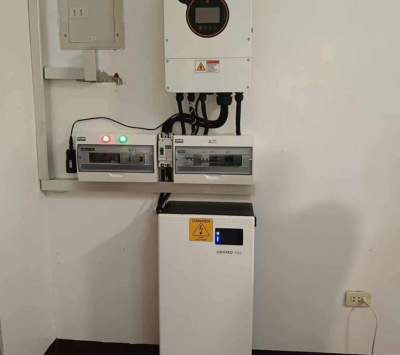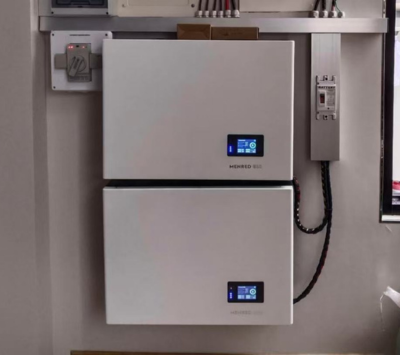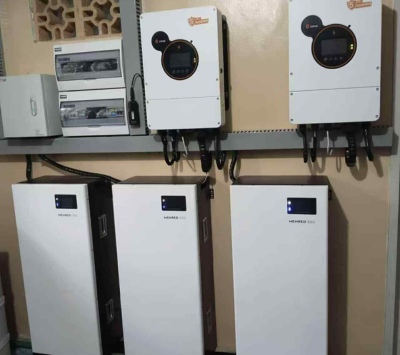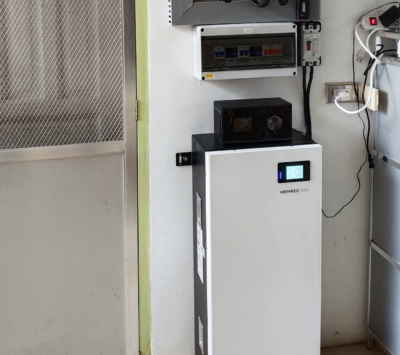Advantages of Photovoltaic Battery Systems
Photovoltaic battery systems have transformed the way we harness and store solar energy. They provide homeowners, businesses, and industries with a sustainable energy solution that offers multiple benefits beyond just cutting electricity bills.
1. Energy Independence
Photovoltaic battery storage allows users to store excess energy generated by their solar panels during the day and use it when needed, such as at night or during power outages.
- Reduced Grid Dependency: By storing solar energy, you can reduce or even eliminate reliance on the traditional electricity grid.
- Reliable Backup Power: Photovoltaic battery systems provide a reliable source of energy during unexpected outages or emergencies, ensuring uninterrupted power for critical systems.
2. Cost Savings
- Lower Electricity Bills: By maximizing self-consumption of solar energy, users can significantly reduce their electricity costs.
- Peak Shaving: Some systems allow energy to be used during peak electricity pricing hours, minimizing expenses.
- Government Incentives: Many countries offer tax rebates, grants, or feed-in tariffs for installing photovoltaic battery systems.
3. Environmental Benefits
- Reduced Carbon Footprint: Photovoltaic battery systems rely on renewable solar energy, reducing greenhouse gas emissions.
- Promotion of Clean Energy: By using and storing solar power, you contribute to the global shift toward sustainable energy solutions.
- Support for Energy Transition: These systems reduce dependence on fossil fuels, encouraging the adoption of cleaner energy sources.
4. Increased Energy Efficiency
- Minimized Energy Waste: Photovoltaic batteries ensure that excess energy generated by solar panels isn’t wasted. Instead, it’s stored for later use.
- Smart Energy Management: Advanced systems integrate with smart home technologies, allowing you to monitor and optimize energy consumption in real-time.
5. Scalability and Flexibility
Photovoltaic battery systems can be tailored to suit various energy demands:
- Residential Use: Ideal for homeowners looking for energy independence.
- Commercial Applications: Businesses can stabilize energy costs and ensure continuous operations.
- Utility-Scale Projects: Large-scale systems help balance the grid by storing energy during low-demand periods and releasing it during peak times.
6. Grid Stabilization
For utility companies, photovoltaic battery systems help stabilize the energy grid by balancing supply and demand. This reduces the likelihood of blackouts or energy shortages.
7. Technological Advancements
The rapid evolution of battery technologies, such as lithium-ion and solid-state batteries, has made photovoltaic systems more efficient, durable, and affordable.
- Longer Lifespan: Modern batteries last up to 15 years with proper maintenance.
- Higher Energy Density: Store more energy in smaller units, saving space and improving efficiency.
What is a Photovoltaic Battery?
A photovoltaic battery is a specialized energy storage device that works alongside solar panels to store electricity generated from sunlight. It is a cornerstone of modern renewable energy systems, enabling efficient energy use and management.
How Does a Photovoltaic Battery Work?
The process involves four primary steps:
- Energy Generation: Solar panels convert sunlight into direct current (DC) electricity.
- Energy Conversion: An inverter transforms DC electricity into alternating current (AC) for immediate use.
- Energy Storage: Surplus electricity charges the photovoltaic battery for later use.
- Energy Distribution: Stored energy powers appliances during nighttime or cloudy days.
Types of Photovoltaic Batteries
1. Lithium-Ion Batteries
- High efficiency and energy density.
- Long lifespan of up to 15 years.
- Compact and lightweight.
2. Lead-Acid Batteries
- Cost-effective but less efficient.
- Suitable for small-scale or backup energy storage.
- Shorter lifespan compared to lithium-ion.
3. Flow Batteries
- Large capacity and scalability.
- Ideal for utility-scale applications.
- Higher upfront cost but long operational life.
4. Emerging Technologies
- Sodium-Ion Batteries: Affordable and environmentally friendly.
- Solid-State Batteries: Promising higher efficiency and safety.
Applications of Photovoltaic Batteries
- Residential: Power homes and reduce dependence on grid electricity.
- Commercial: Manage energy costs and ensure reliable power for operations.
- Industrial: Support heavy machinery with a consistent energy supply.
- Off-Grid Solutions: Provide electricity in remote areas without grid access.
Key Features of Photovoltaic Batteries
- Scalability: Easily expand the system as energy needs grow.
- Durability: Designed to withstand frequent charge and discharge cycles.
- Smart Integration: Compatible with energy management systems for optimized performance.
Real-Life Case Study: Successful Installation of a Photovoltaic Battery System
Project Overview:
- Client: Residential homeowner with high energy usage.
- Objective: Achieve energy independence and reduce electricity costs.
- System Components:
- 3 Menred ESS LFP.6144.G2 Lifepo4 Batteries (12.28 kWh each).
- 1 Menred ESS LFP.6144.W Lifepo4 Battery (6.144 kWh).
- Total Storage Capacity: 43 kWh.
 Results
Results
1. Energy Independence:
The system achieved 85% energy independence, with minimal reliance on grid electricity during consecutive cloudy days.
2. Cost Savings:
- Electricity bills dropped from $200/month to $50/month, resulting in 75% savings.
3. Backup Power:
The system provided uninterrupted power during a 7-hour outage, powering essential appliances and lighting.
4. Environmental Impact:
- Annual carbon emissions were reduced by approximately 10 tons, equivalent to planting 500 trees.
5. Scalability:
- The client has the option to expand the system in the future by adding more batteries or solar panels.
Client Testimonial:
“The installation of the photovoltaic battery system has been life-changing. Not only are we saving money, but we also feel confident about having a reliable backup during outages. Plus, knowing we’re contributing to a cleaner environment makes it all worthwhile.”
Summary of Key Specifications
| Component | Quantity | Capacity | Total Capacity |
|---|---|---|---|
| Menred ESS LFP.6144.G2 | 3 | 12.28 kWh | 36.84 kWh |
| Menred ESS LFP.6144.W | 1 | 6.144 kWh | 6.144 kWh |
| System Total | 43 kWh |
Conclusion:
This real-life example demonstrates the transformative potential of photovoltaic battery systems. By investing in high-quality components like Menred ESS batteries and leveraging expert installation, the client achieved substantial energy savings, environmental benefits, and peace of mind.

